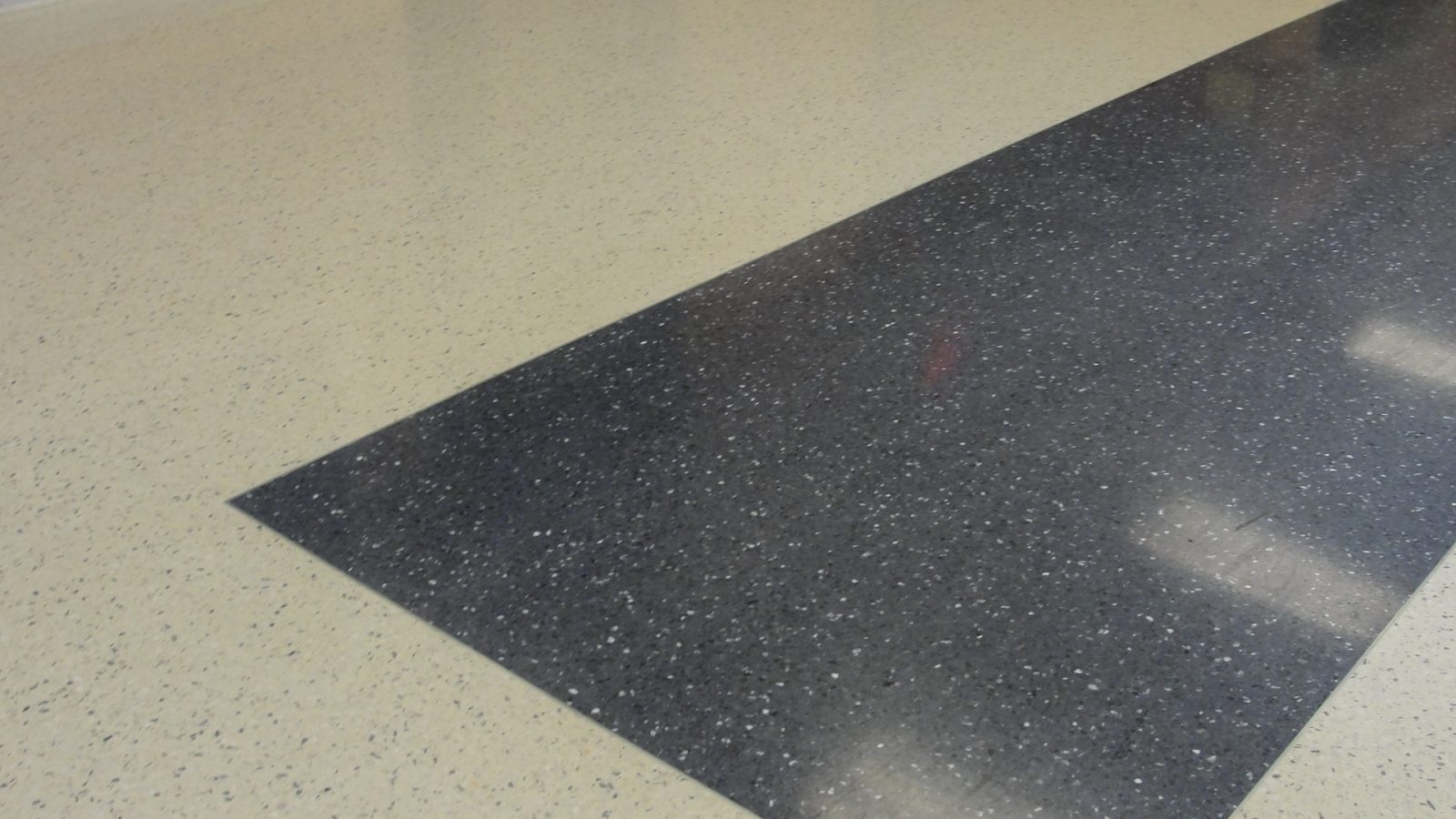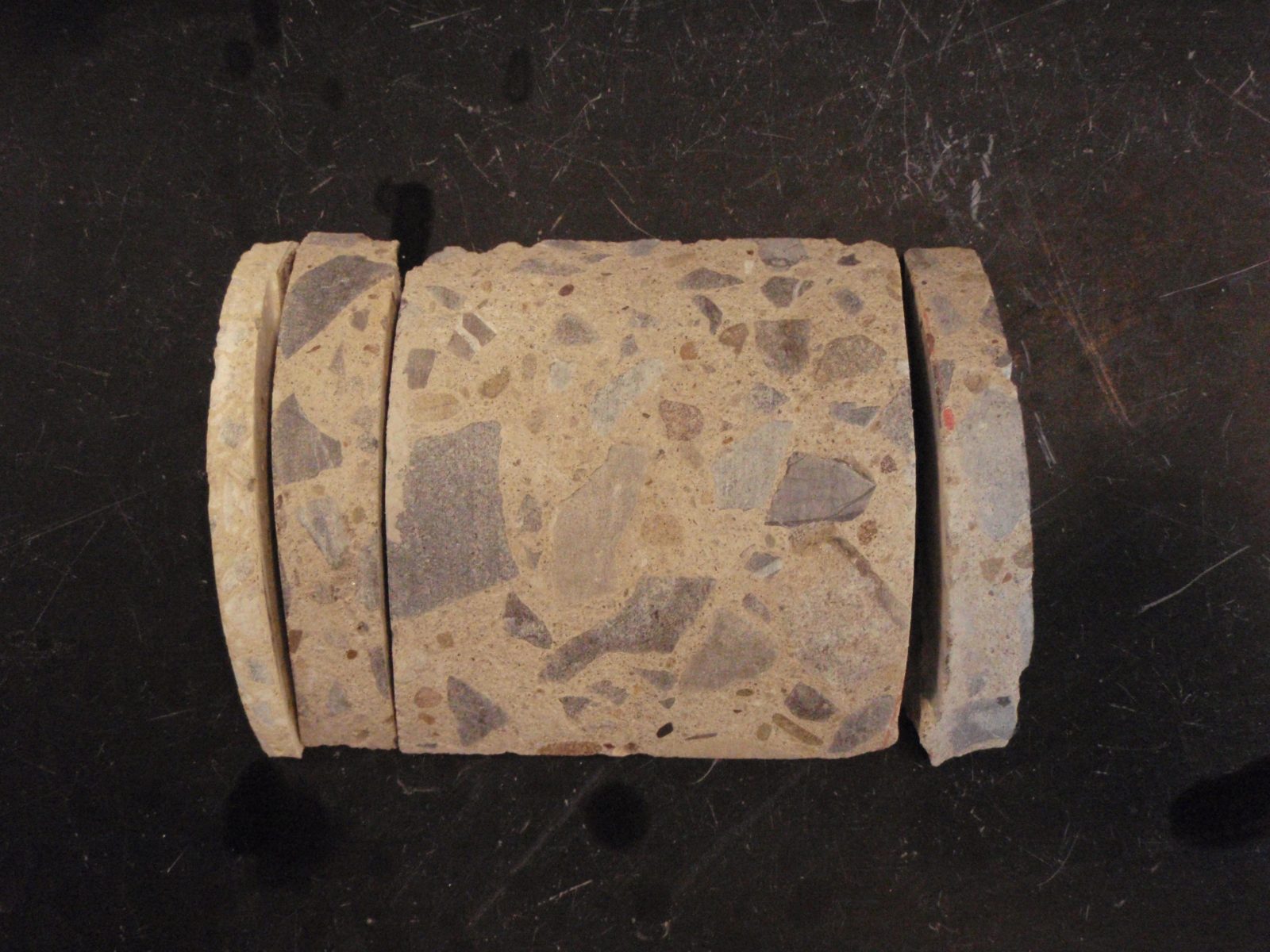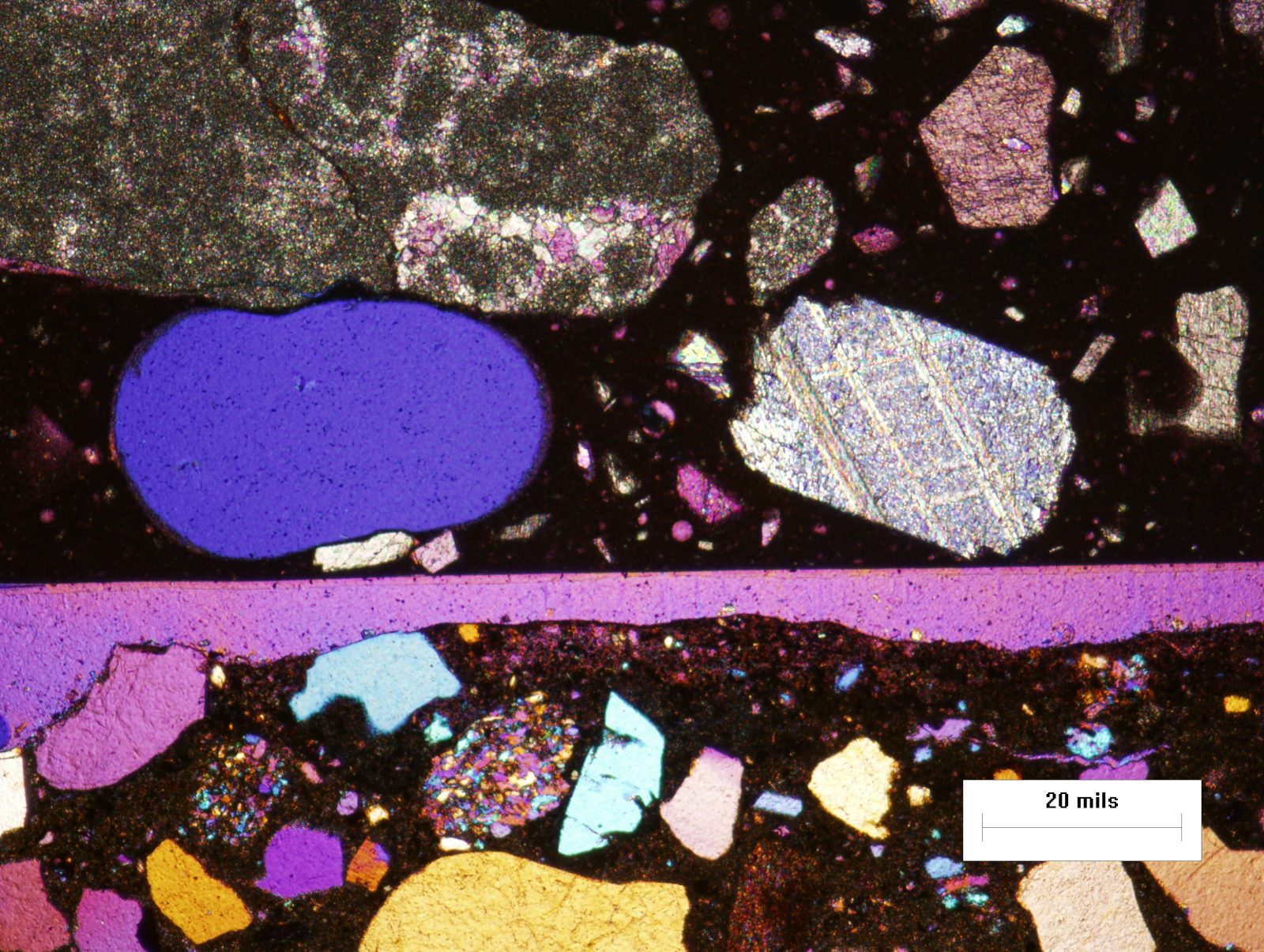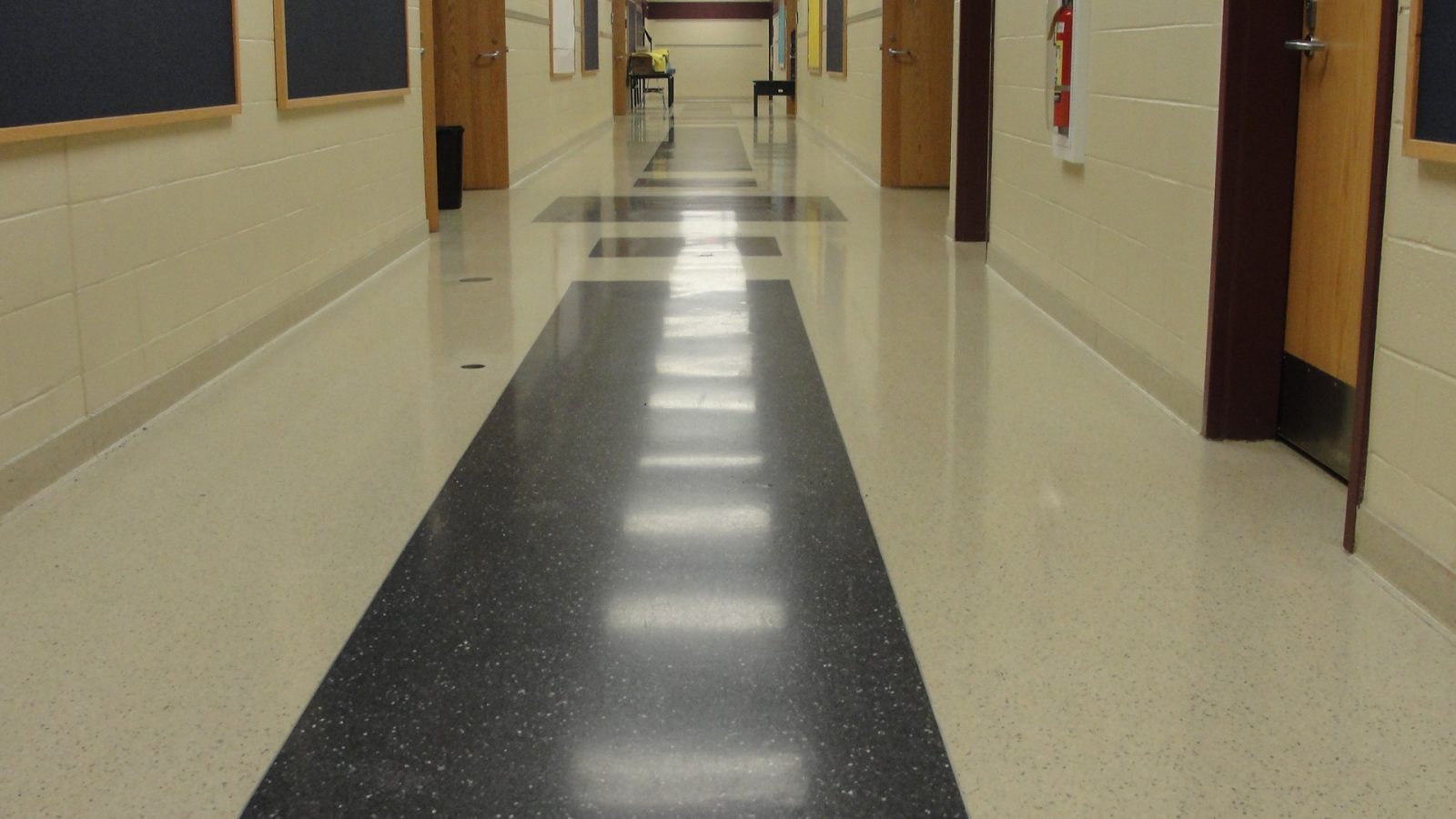Philipsburg, PA
Philipsburg Elementary School
Scope/Solutions
Completed in 2004, Philipsburg Elementary School is a two-story structure with epoxy terrazzo flooring installed on the concrete floor slabs in corridors and other common areas. Shortly after construction, school personnel observed liquid-filled blisters in the epoxy terrazzo flooring on the first floor. SGH investigated the cause of the flooring damage in 2010.
SGH visited the site to document the condition of the flooring, measure relative humidity and pH of the concrete floors slabs, and collect core samples. In our laboratory, we performed the following:
- Microscopic examination of polished core samples to identify characteristics of the concrete substrate that could affect the flooring
- Chemical analyses with Fourier transform infrared (FTIR) spectroscopy scanning electron microscopy (SEM) to identify the constituents of the flooring system and the blister liquid
- Examination of the bond line on samples where terrazzo had delaminated from the concrete slab
- Analysis of the terrazzo’s plasticizer extract per ASTM D2124 – Standard Test Method for Analysis of Components in Poly(Vinyl Chloride)
We also engaged an independent laboratory to perform a soluble ion analysis on concrete cores to identify the concrete constituents at varying depths.
SGH concluded the liquid-filled blisters were caused by moisture from the concrete slab and sand blotter layer migrating through defects in the epoxy moisture mitigation membrane applied on the top surface of the concrete slab, collecting in voids, and causing blisters under the epoxy terrazzo. We recommended removing the terrazzo flooring and membrane.
Project Summary
Key team members




